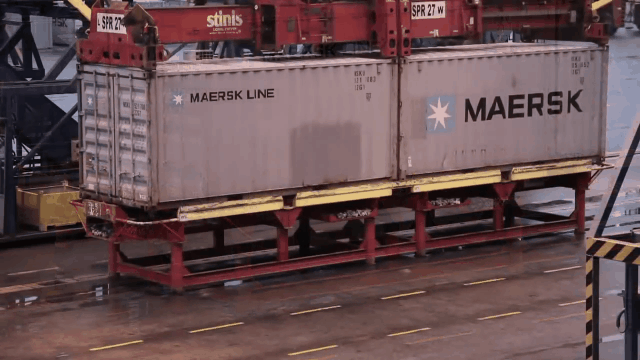Have you ever heard of a twistlock? Unless you’re a stevedore, probably not. Yet this little mechanism is what makes it possible to stack shipping containers onto cargo ships larger than city blocks — enabling a global trade network that brought most of your belongings to your doorstep. And we have a relatively little-known mechanical engineer to thank for it.
Our belongings are the result of a vast, global constellation of suppliers, all of whom depend on a system that only emerged in the 1950s. As Rose George explained in her recent book, 90 Per cent of Everything: Inside Shipping, the Invisible Industry That Puts Clothes on Your Back, Gas in Your Car, and Food on Your Plate, this system is responsible for transporting 90 per cent of everything we own.
Your phone, your clothes, your books, your furniture, your petrol, your food: all of it is packed into steel containers and hauled through one of many hugely busy shipping lanes that truss the globe.
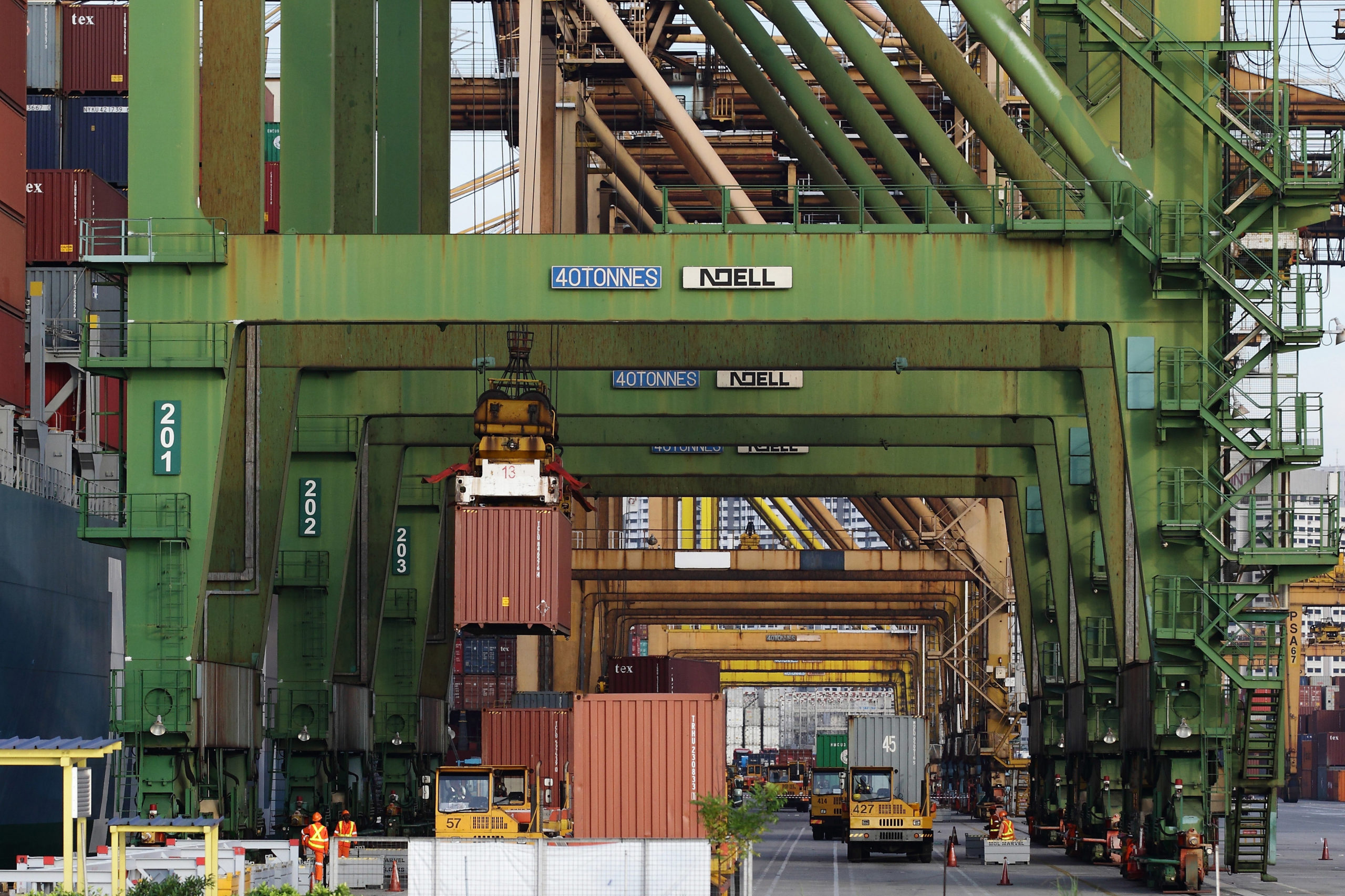

Image: Suhaimi Abdullah
The person responsible for building the technology was a guy named Keith Tantlinger. Tantlinger was a lifelong Californian who spent World War II designing the tools used to build B-17 bombers.
After the war, Tantlinger stopped designing planes and started designing technology — starting, in the 1950s, with the idea of the shipping container. Before Tantlinger came along, the shipments were made in all sorts of different loads, and each one had to be unloaded at its destination port slowly, carefully, and very inefficiently. Tantlinger had a better idea: Standardize a crate that could be lifted from boat to truck in one fell swoop.
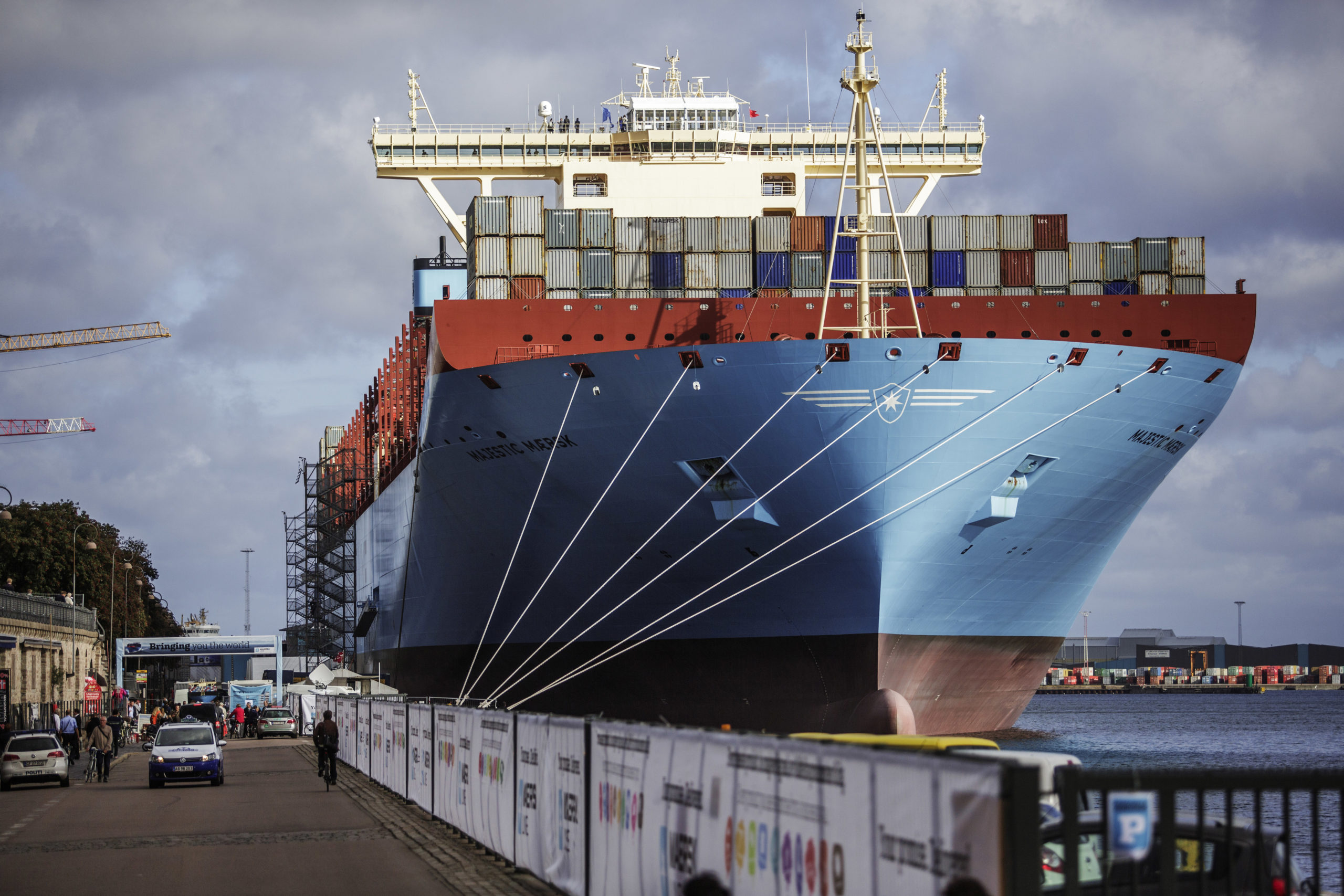
The world’s largest container vessel, the Korean built Majestic Maersk. AP Photo/POLFOTO, Rasmus Flindt Pedersen.
But a standardised container was just the vessel. The really important bit was how to stack it. After all, to ship increasingly huge volumes of stuff, shipping companies needed to cram more and more containers onto a single ship. Our appetite for things was far outpacing the race to build bigger cargo ships, so they would have to stack — and stack quickly.
So, in the mid-1960s, Tantlinger invented a brilliantly simple and nearly indestructible mechanism that quickly and safely latched each container to the next. It was called a twistlock, and it looked like this:
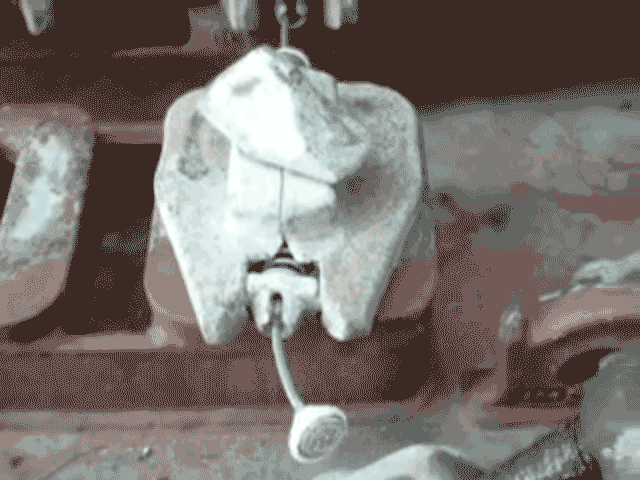
It’s basically the same idea as your average computer lock — except strong enough to stabilise massive loads. A two-part connector made up of a “female” end is built into every corner of a shipping container, and a “male” end is what connects between female units.
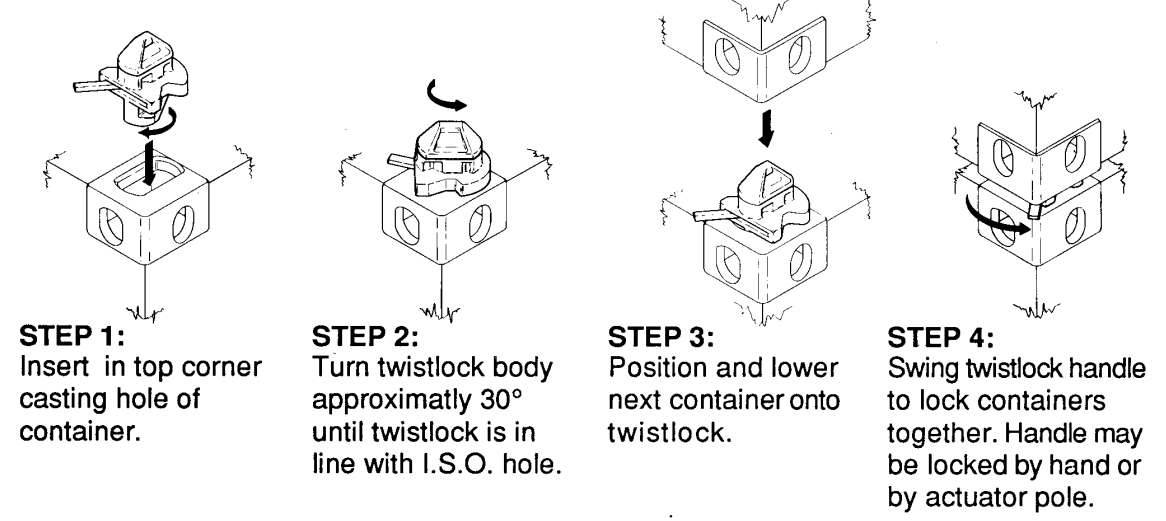
The male piece is a simple piece of metal — often pointed — that is inserted into the corner whole and then rotated by 90 degrees, locking it into place. Here’s Tantlinger’s patent, from 1967:
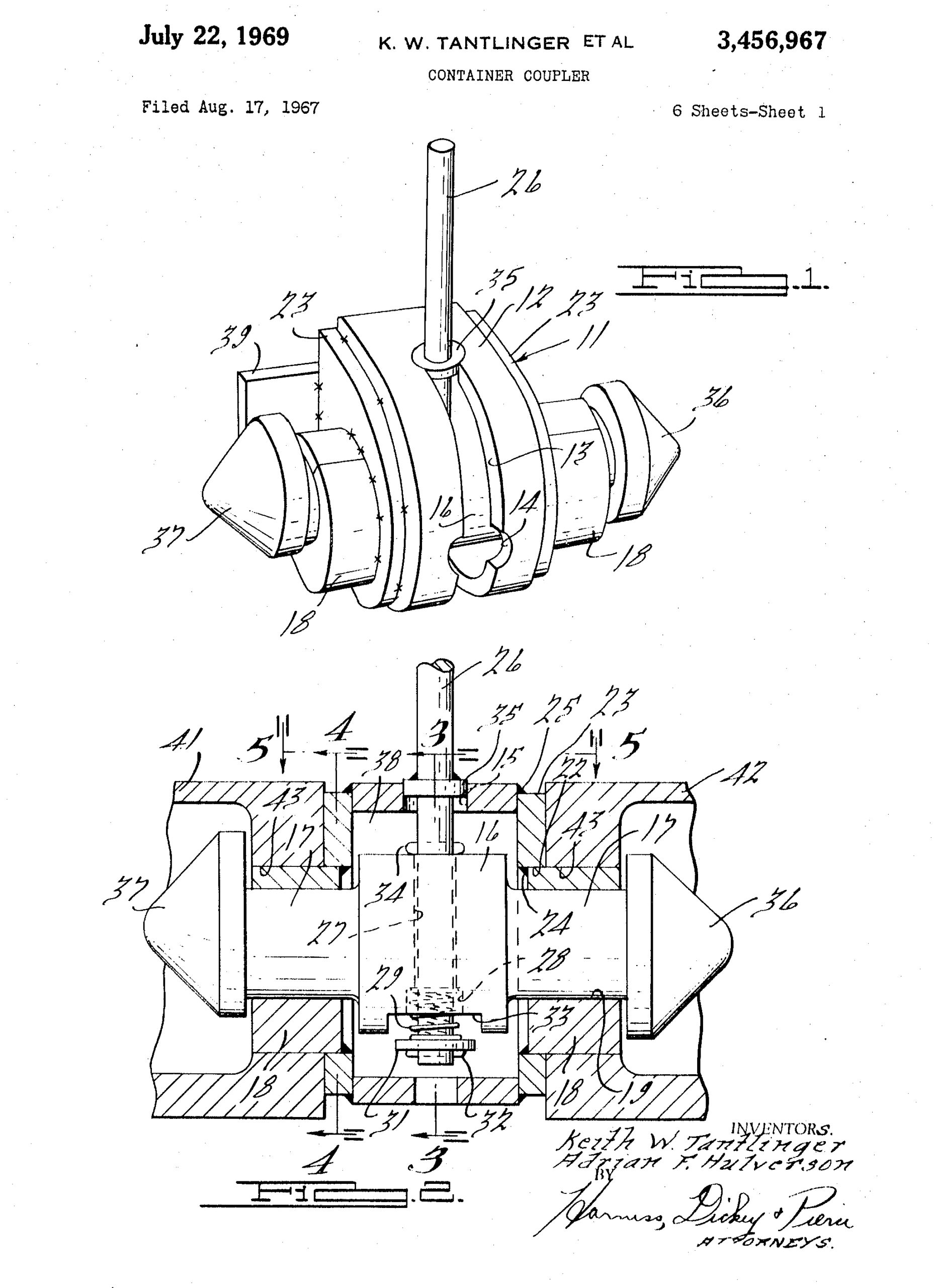
It was a tiny idea, but it was massively important. With it, containers could be stacked without lateral cross-bracing, dozens per hour, by the massive boom derricks you still see in ports today:
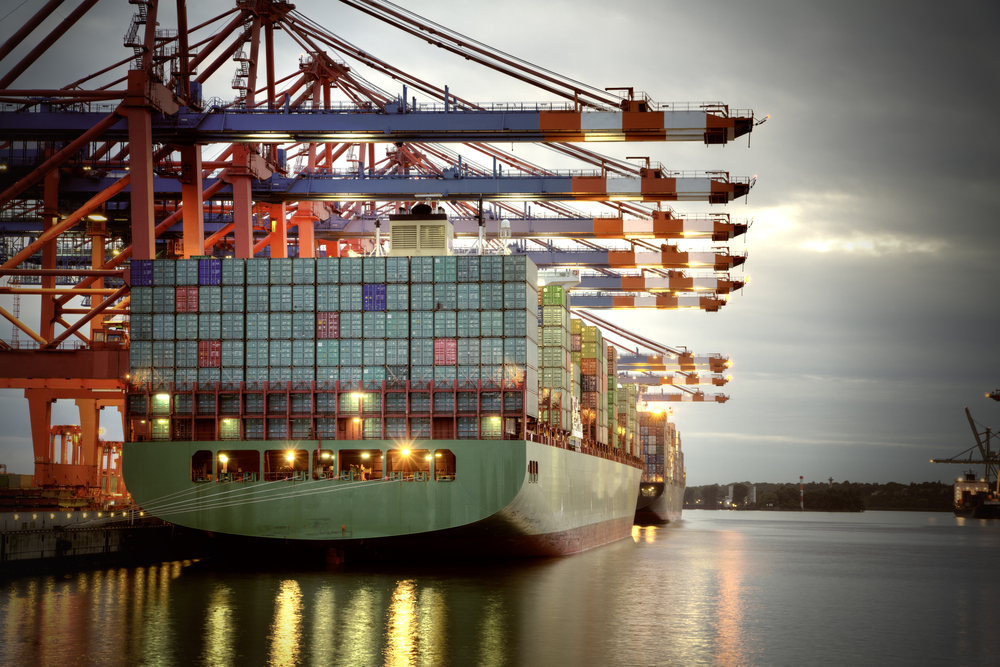
Image: Robert Mandel
Though some need human labour to lock into place, these days, companies like MacGregor make fully automatized versions that latch into place on their own. So our ports, which once ran thanks to thousands of human stevedores, are increasingly automated:
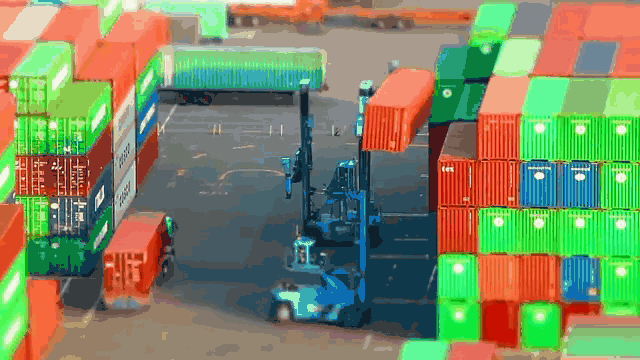
The change in how our ports are run is bigger than you’d think. In fact, there’s a good chance it’s affected you, if you live in a coastal city. As Tantlinger’s device caught on and ports began to shrink in the 1970s and ’80s, the riversides that once bustled with life descended into a deep blight.
Marc Levinson, the author of The Box: How the Shipping Container Made the World Smaller and the World Economy Bigger, explains how containers set in motion a butterfly effect across cities worldwide:
The armies of ill-paid, ill-treated workers who once made their livings loading and unloading ships in every port are no more, their tight-knit waterfront communities now just memories. Cities that had been centres of maritime commerce for centuries, such as New York and Liverpool, saw their waterfronts decline with startling speed…
It was only in the 1990s and 2000s that the burgeoning housing market saw those derelict dockyard properties for what they were: Fantastic real estate in neighborhoods close to city centres. These old shipyards are now the point of huge amounts of investment and sky-high rents.
So Tantlinger played an absolutely crucial role in developing not just our consumer landscape, but our cities themselves — all thanks to a simple locking mechanism he designed in California in the late 1960s. So the next time you damn the influx of luxury condos to waterfront Brooklyn, remember: You have a brilliant mechanical engineer to thank for the fact that anyone can live there today.
